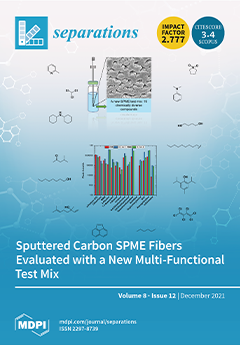Gram-negative, anaerobic bacterias are predominate in periapical infections. The bacterial lipopolysaccharide (LPS) initiates the process of inflammation and periapical bone resorption. Usage of various medicaments retards or inactivates the bacterial endotoxin (LPS). However, the results are not highly effective. In recent years, owing
[...] Read more.
Gram-negative, anaerobic bacterias are predominate in periapical infections. The bacterial lipopolysaccharide (LPS) initiates the process of inflammation and periapical bone resorption. Usage of various medicaments retards or inactivates the bacterial endotoxin (LPS). However, the results are not highly effective. In recent years, owing to antimicrobial resistance, the shift from conventional agents to herbal agents has been increased tremendously in research. Keeping this in mind, the present study was formulated to evaluate the efficacy of
oregano essential oil in inhibiting bacterial LPS- induced osteoclastogenesis. Four different concentrations (0 ng/mL, 25 ng/mL, 50 ng/mL, and 100 ng/mL) of
oregano essential oil extract were added into 96-well culture plate. Under light microscope, quantification of osteoclast cells was performed. One-way ANOVA with post-hoc Tukey test was carried out on SPSS v21. A significant reduction (
p < 0.001) in the osteoclast was observed in the experimental groups compared to no
oregano essential oil extract (control). A dose-dependent significant reduction (
p < 0.001) in osteoclast formation was observed among the experimental groups, with lesser osteoclast seen in group IV with 100 ng/mL of
oregano essential oil extract. Thus, it can be concluded that
oregano essential oil extract can be utilized as a therapeutic agent that can target bacterial LPS-induced osteoclastogenesis. However, randomized controlled studies should be conducted to assess the potential use of this extract in the periapical bone resorption of endodontic origin.
Full article





